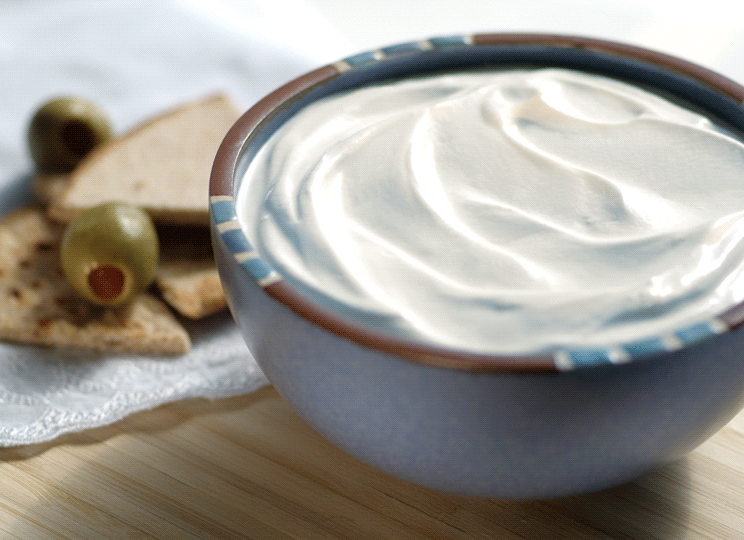Difference Between Yogurt and Sour Cream

Both highly popular dairy products, yogurt and sour cream share a variety of similarities – both are fermented and cultured dairy products, and both are frequently used to add a creamy or subtly tart flavour to foods, and a softness to the texture of baked goods. However, that is pretty much where the similarities end – from there onwards, both products are fairly distinct from one another, as far as factors like taste, bacterial content, and nutritional value are concerned.
Instructions
-
1
To begin with, the base with which they are made is a major difference between the two dairy products. Yogurt is made of milk which is fermented – this milk can come from a variety of animals, including cows, goats, sheep, and even yaks. Soy milk is also utilised in order to produce soy yogurt. Sour cream, on the other hand, is made from pasteurised cream which becomes thick and tart over time, either by itself or with the addition of a bacterial culture – many recipes for homemade sour cream call for vinegar to be added to regular cream.
-
2
In addition to the base, the bacteria used in the process of creating sour cream and yogurt are also different. Sour cream is made by adding bacteria like Streptococcus lactis or Streptococcus cremoris, which is followed up by Leuconostoc citrovorum, added in order to thicken the cream and develop an element of acidity. The fermentation process is then stopped with the re-pasteurisation of the cream. Yogurt, on the other hand, does not require re-pasteurisation – it is made by using Streptococcus thermophilus and either Lactobacillus acidophilus or L. bulgaricus.
-
3
Sour cream and yogurt are often considered interchangeable, and while they can be used as substitutes for each other in certain circumstances, their primary uses are very different. Sour cream is used primarily as a condiment, mixed into dips for chips and quesadillas, drizzled atop fruits, added into salads, or used to dress baked potatoes. Yogurt, on the other hand, can be eaten on its own as a snack, with chunks of fruit added in. In addition, it is also used as a base for healthy smoothies and milkshakes.
-
4
Owing to the differences in their production processes, the nutritional value of sour cream and yogurt is also fairly different. Yogurt is healthier and less fattening – a 100g of yogurt contains 94 calories, while the same amount of sour cream contains 181 calories. Both dairy products contain vitamin C and calcium, but sour cream also contains vitamin A, which yogurt lacks.





